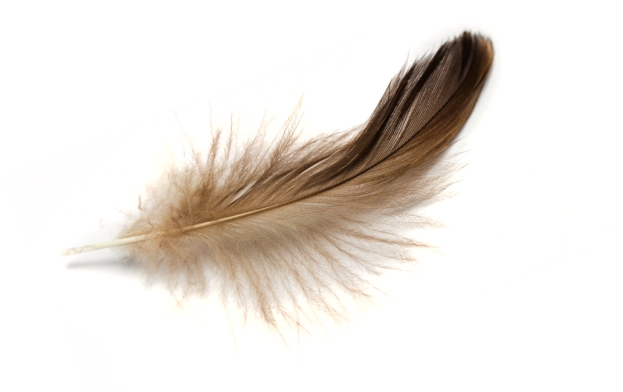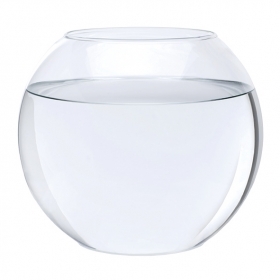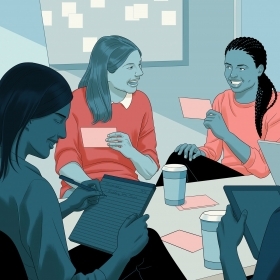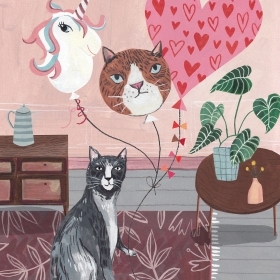Last spring my family found a bird’s nest in our garage. We noticed it by chance, high on a shelf 10 feet up, a packed swirl of twigs and pine straw about the size and shape of a catcher’s mitt. One of my kids had broken a window in our garage months before (to this day, both the projectile and culprit remain at large) and it must have been through this breach that the bird gained access. It was unclear how long the nest had been there—for all I knew, it could have been months and I’d just never noticed it. We have a way of walking right past things we don’t expect to see.
Though she was rarely sighted, we were further surprised one day to find our mysterious tenant had delivered a clutch of five Instagram-worthy speckled eggs. We cooed and marveled over this development, but when nothing happened after a few weeks, we figured the eggs had either been abandoned, or else were duds.
We were wrong on both counts. My husband found the hatchlings one day, pink and mottled, their bulbous eyes fused shut and small bodies completely still. “I think they might be dead,” he texted me from home. “They’re not moving at all.”
But what, really, was there to do? Poke a little mirror under their beaks to see if it fogged up? Hook up teeny tiny EKG leads? An injection of epinephrine and chest compressions with the tip of a pinkie finger? Regardless, it sounded like we were too late. Baby birds exhibiting no signs of life sounded … well, pretty dead indeed.
I approached the nest that evening with the deliberate clinical detachment I’d honed over years of medical practice, anticipating a grim visual. What greeted me instead were five bright yellow triangles, their gaping maws cheeping, frisky and most definitively alive. I exhaled a long breath I didn’t realize I’d been holding in.
Still, I knew nature could be pitiless, so I steeled myself for what seemed inevitable over the next few weeks. The runt who couldn’t get his share of the food and would gradually wither away. An over-adventurous fledgling taking a spill out of the nest onto the concrete floor below. Maybe one day the mother bird would simply not return to feed them. Regardless of the mechanism of injury, statistically I expected some loss by attrition. And each day, I’d approach the nest with a vague sense of dread, fully prepared to come face to face with one or two or even five dead baby birds.
But every time I looked, there were no dead birds. Each day, even several times a day, I made my rounds and did a quick head count to be sure. I couldn’t tell them apart (I mean, I wasn’t the Birdwoman of Alcatraz or anything—I didn’t give them names), just a quick one-two-three-four-five. Every day, all five were there. Sometimes jumbled in a different order, sometimes crammed one beneath the other, but day after day, all five.
Their enormous eyes opened. They first sprouted fuzz, then feathers. The nest around them seemed to shrink as inside it, they grew. And grew. And grew.
Then, one morning, the nest was empty again. We saw one of the hatchlings in the driveway, a straggler, recognizable only for the tufts of babyish down still visible by his wings. And then, like the other four before him, he took flight and was gone.
It can be a short hop from pragmatism to pessimism, from realism to cynicism. It’s a hazard of the medical profession, and a deeply corrosive one. Because no outcomes are assured, and sometimes we’re astonished in the opposite direction. People beat incredible odds. Genuine miracles happen.
Look, I know. It was just a nest in our garage, and they were just birds. This story is quotidian, unremarkable. But for me, it was also a potent reminder that surprise and delight can sometimes go hand in hand. And that delight can be found in the most improbable places, exactly when you least expect it.
Michelle Au wrote this essay before the coronavirus crisis. As a physician anesthesiologist at Emory St. Joseph’s Hospital in Atlanta, she is on the front lines of the battle against COVID-19. She is the author of the medical memoir This Won’t Hurt a Bit (and Other White Lies).








We ask that those who engage in Wellesley magazine's online community act with honesty, integrity, and respect. (Remember the honor code, alums?) We reserve the right to remove comments by impersonators or comments that are not civil and relevant to the subject at hand. By posting here, you are permitting Wellesley magazine to edit and republish your comment in all media. Please remember that all posts are public.